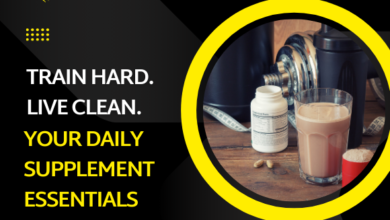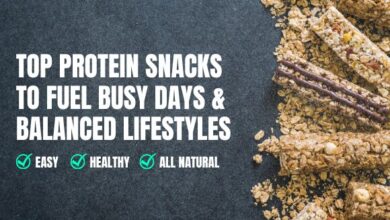Why Data-Led Wellness Is Becoming the Standard in Personal Health Management

Wellness used to mean eating clean, moving more, and hoping for the best. Today, more people want clear answers about how their bodies respond to daily habits. This shift from vague goals to data-backed insights is changing the way personal health is managed.
Modern tools can now track much more than steps or calories. They provide real-time feedback on metabolism, energy levels, stress, and recovery. These insights help people make decisions with confidence rather than guessing what might work.
Hume Health is one of the solutions leading this change. With a smart scale, a wearable band, and an easy-to-use app, it helps people understand their health in greater detail. As expectations rise and technology improves, using data to guide wellness choices is quickly becoming the new standard.
Quick Take Why This Shift Matters Now

More people are moving toward data-led wellness because they want clarity, not confusion. With smart tools offering personal feedback, it’s easier to understand what your body needs and how to support it daily.
From Guesswork to Guidance
For years, health and wellness advice has followed a one-size-fits-all model. Most people had to rely on intuition, trends, or trial and error to figure out what worked for them. Now, with tools that offer real-time feedback, individuals can replace guesswork with clarity. They can learn how their body responds to different routines, adjust based on actual patterns, and stay consistent with goals that feel personal and achievable.
Data-led wellness encourages people to shift from focusing on short-term results to building habits that are rooted in understanding. With consistent tracking and smart interpretation, users get more than information. They get guidance tailored to their lifestyle and needs.
Health Tech Goes Deeper
Basic fitness trackers were once a breakthrough. But counting steps or calories only scratches the surface. Today’s most advanced systems—like Hume Health—go further by measuring what’s happening beneath the surface. That includes recovery patterns, metabolic shifts, heart rate variability, and more.
By offering a complete picture of how the body is functioning day to day, this kind of technology helps people make informed decisions. It supports smarter rest, more efficient training, and better overall balance. What once required a lab or clinic is now available at home, making deeper wellness more accessible than ever.
The Building Blocks of Data-Led Wellness
Data-led wellness is about turning everyday body signals into useful insights. It relies on tools that work together—collecting, interpreting, and presenting information in a way that supports better health decisions without adding stress or complexity.
Real-Time Body Metrics
Today’s wellness devices go far beyond tracking steps. They collect a wide range of signals that reveal how the body is functioning throughout the day. Some of the most impactful metrics include:
- Heart rate variability: A key indicator of stress and recovery readiness
- Hydration and body composition: Useful for tracking progress beyond weight
- Metabolic rate and energy trends: Help you adjust routines based on actual needs
These kinds of measurements help users stay one step ahead, spotting small issues before they become problems.
Continuous Monitoring and Feedback
Wearables like the Hume Band gather data throughout the day without interrupting your routine. This passive tracking gives users a full picture of how their body responds to different situations—without needing to check in constantly. The feedback is subtle but consistent, making it easier to stay connected to your wellness goals.
Centralized Health Dashboards
It’s not enough to collect data—it needs to be accessible and easy to understand. The Hume Health app organizes everything in one place, offering clear visuals and weekly trends. Instead of overloading you with numbers, it highlights the areas that need your attention and supports smarter decisions with personalized guidance.
How Hume Health Fits Into This New Standard
As data-led wellness becomes more mainstream, certain tools are standing out for how well they bring everything together. Hume Health is one of those systems. It’s designed to make personal health data not just accessible but useful—helping people build routines that respond to how their body actually feels.
The Full Ecosystem in Action
What makes Hume different is how its components work together. The Body Pod tracks body composition and metabolic stats. The Hume Band monitors recovery, stress, and daily energy. The app brings all that information into one place, turning it into a clear picture of your overall wellness. Instead of using several separate tools, users get a streamlined experience with data that connects across all areas of health.
From Tracking to Transformation
Collecting data is one thing, but knowing how to use it is another. Hume focuses on the next step—coaching. Through the app, users receive insights and gentle nudges based on their trends. Over time, those nudges support small shifts in sleep, stress, movement, and energy. This helps turn tracking into transformation, and routines into real, lasting habits.
Benefits That Go Beyond Fitness Goals

Data-led wellness helps users go deeper than basic exercise tracking. It supports better decision-making around stress, recovery, and overall well-being. With tools like Hume Health, people are better equipped to manage their health in real life—not just during workouts.
Stress and Recovery Awareness
Hume tracks the body’s internal signals to reveal how well you’re recovering from daily life. With the Hume Band, users can monitor:
- Heart rate variability to understand stress load
- Metabolic momentum to gauge energy readiness
- Recovery quality to know when the body needs rest
This helps users avoid burnout, improve resilience, and train smarter.
Lifestyle Decision Support
Daily choices add up. With clear insights from Hume, users can adjust routines in simple but effective ways—like moving more on low-energy days, improving sleep timing, or easing into activity after poor recovery. These small shifts build into long-term consistency.
Long-Term Health Monitoring
Seeing trends over weeks or months provides context that single data points can’t. Hume’s app makes it easy to track meaningful change, helping users recognize patterns and prevent imbalance before it affects performance or well-being. It supports a steady, informed path toward better health.
What to Consider Before Going Fully Data-Led
While the benefits of smart wellness tools are clear, it’s important to approach data-led health with the right mindset. These systems work best when paired with consistency, patience, and a willingness to engage with the insights they provide.
The Importance of Consistency
The more consistently you track, the more useful the data becomes. Tools like Hume Health are designed for daily use, with low-effort features that make it easy to stay engaged. Over time, small daily scans and wearable tracking reveal trends that occasional check-ins simply can’t show.
Avoiding Data Overload
Wellness tech should simplify your health routine—not overwhelm it. That’s why Hume focuses on meaningful insights rather than constant alerts. The app highlights what matters most, helping users avoid the stress of over-analyzing every stat. For those who want support without the noise, this kind of filtered guidance is essential.
Choosing the Right System
Not all devices offer the same quality or clarity. When exploring data-led wellness, look for systems that provide:
- Reliable accuracy across multiple metrics
- Integrated tracking with both hardware and app
- Clear summaries that translate data into action
- Supportive coaching to guide your decisions
Hume stands out by combining all these features into one cohesive experience, making it easier for users to take control of their wellness without feeling overwhelmed.
Conclusion
Wellness is no longer limited to surface-level tracking or guesswork. People want real insight into how their bodies function, and data-led tools are making that possible. By turning daily signals into clear feedback, this new approach helps users make smarter decisions that truly support their health.
Hume Health is one of the systems leading this shift. With its smart scale, wearable band, and intuitive app, it offers a complete view of wellness—without adding complexity. It gives users the tools to track, understand, and improve their health in a sustainable way.
As the demand for clarity and personal insight continues to grow, data-led wellness is becoming less of a luxury and more of a standard. The future of health is personal, connected, and informed—and that future is already here.



